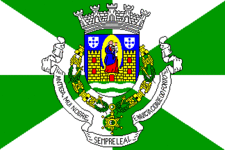Porto Portugal: Difference between revisions
Jump to navigation
Jump to search
Created page with "{{Infobox municipality |municipality= City |established = 275 BCE |image = |image_caption = |image_seal = |area = 15.99 sq.mi |elevation = 341ft |website = |timezone = GMT..." |
No edit summary |
||
| Line 1: | Line 1: | ||
{{Infobox municipality | {{Infobox municipality | ||
| | |image=Porto the Duoro River.jpg | ||
| | |image_caption=Porto the Duoro River | ||
| | |image_seal=Pt-prt.gif | ||
| | |municipality=City | ||
|area=15.99 sq.mi | |||
|area = 15.99 sq.mi | |elevation=341ft | ||
|elevation = 341ft | |population=231962 | ||
|website = | |website=https://www.porto.pt/en | ||
|timezone = GMT | |timezone=GMT | ||
|description= | |description=Porto or Oporto is the second-largest city in Portugal, the capital of the Porto District, and one of the Iberian Peninsula's major urban areas. Porto city proper, which is the entire municipality of Porto, is small compared to its metropolitan area, with an estimated population of just 231,962 people in a municipality with only 41.42 km2. Porto's metropolitan area has around 1.7 million people (2021) in an area of 2,395 km2 (925 sq mi), making it the second-largest urban area in Portugal. It is recognized as a global city with a Gamma + rating from the Globalization and World Cities Research Network. | ||
Porto or Oporto is the second-largest city in Portugal, the capital of the Porto District, and one of the Iberian Peninsula's major urban areas. Porto city proper, which is the entire municipality of Porto, is small compared to its metropolitan area, with an estimated population of just 231,962 people in a municipality with only 41.42 km2. Porto's metropolitan area has around 1.7 million people (2021) in an area of 2,395 km2 (925 sq mi), making it the second-largest urban area in Portugal. It is recognized as a global city with a Gamma + rating from the Globalization and World Cities Research Network. | |||
}} | }} | ||
Latest revision as of 05:47, March 24, 2022
- Members
Porto or Oporto is the second-largest city in Portugal, the capital of the Porto District, and one of the Iberian Peninsula's major urban areas. Porto city proper, which is the entire municipality of Porto, is small compared to its metropolitan area, with an estimated population of just 231,962 people in a municipality with only 41.42 km2. Porto's metropolitan area has around 1.7 million people (2021) in an area of 2,395 km2 (925 sq mi), making it the second-largest urban area in Portugal. It is recognized as a global city with a Gamma + rating from the Globalization and World Cities Research Network.
Activities

|
EnvyPorto | |
| Through small and low cost sensing stations that can be installed in the urban infrastructure, it is possible to create a dynamic high level map of indicators on air quality, noise pollution levels, temperature, atmospheric pressure, humidity and luminosity. Using this high level map in articulation with the data collected using a small number of certified sensing stations (usually high-cost stations), cities will be able to define dynamic urban policies, namely on mobility and energy. | ||

